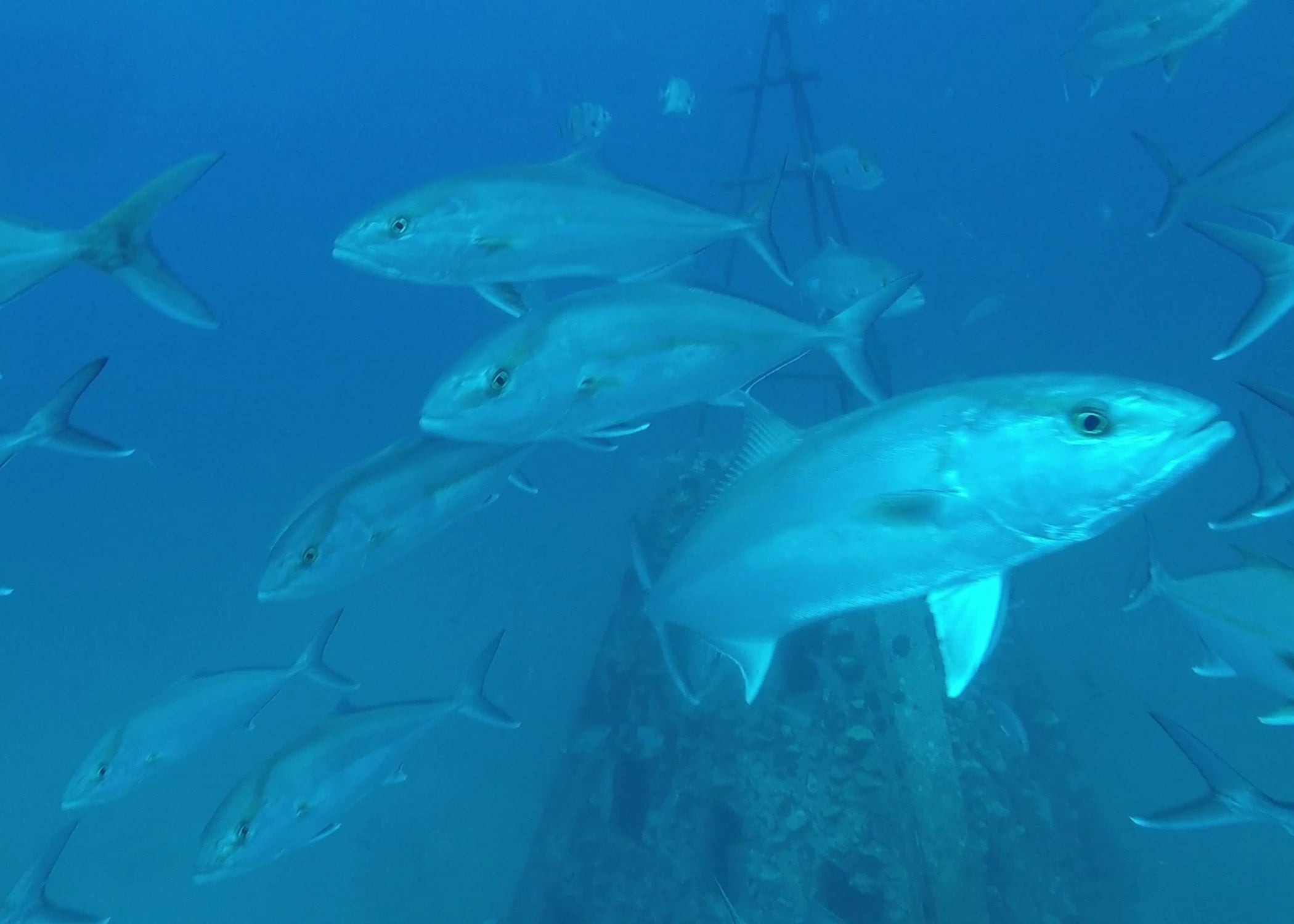MSU part of fisheries study in Gulf of Mexico
Published 4:03 pm Tuesday, September 7, 2021

- Researchers from Mississippi are involved in a project to estimate the number of Greater Amberjack living in the U.S. waters of the South Atlantic and Gulf of Mexico. (Submitted photo by University of South Alabama Fisheries Ecology Lab/Dauphin Island Sea Lab) Alt text -- Large, silver fish swim in blue water.
By Bonnie Coblentz
MSU Extension Service
BILOXI, Miss. — Fisheries experts at Mississippi State University and other research institutions are conducting an $11.7 million study of the greater amberjack, an important recreational and commercial species in the South Atlantic and Gulf of Mexico that is threatened by overfishing.
Marcus Drymon, an assistant professor of marine resources in the MSU Coastal Marine Extension Program, is part of the eight-state, 18-member team investigating the number of greater amberjacks living in those waters, their movements, and their distribution by habitat, including artificial, natural and uncharacterized habitats. The Mississippi-Alabama Sea Grant Consortium oversaw team selection.
The work is funded by a $9 million federal grant plus matching funds from the various institutions for a total of $11.7 million. In addition to MSU, the 13 institutions involved also include the University of Southern Mississippi and the University of South Alabama’s Dauphin Island Sea Lab, which MSU has collaborated with in the past.
“The greater amberjack abundance study in the South Atlantic and Gulf of Mexico is one way Sea Grant is helping to ensure a safe and sustainable supply of seafood products for current and future generations,” said Jonathan Pennock, program director of the National Sea Grant College. “This project will provide valuable information for the management of greater amberjack as well as insight useful to future fisheries research and engagement.”
Many members of the research team, including Drymon, recently participated in a great red snapper count. Lessons learned in that study about tactics should benefit the current study. Once underway, the team will use technologies including hydroacoustics, underwater cameras and remotely operated vehicles to monitor greater amberjack populations.
Fishermen will also be involved, as they will be asked to indicate on online maps exactly where they usually catch fish. This data will help researchers determine where to take samples and focus their efforts on areas where amberjacks are known to live.
Additionally, the study will provide fish tags worth $250 to anglers who return them and report catch locations.
According to the Mississippi-Alabama Sea Grant Consortium, scientists also will use Environmental DNA, or eDNA, technology to try to correlate fish density with the amount of eDNA in the water. eDNA has been used to determine the presence of species of concern, such as sturgeon and bluefin tuna. This study will determine if it is a viable option for abundance studies.
Visit http://masgc.org/greater-amberjack to learn more about Greater Amberjack and this study.





